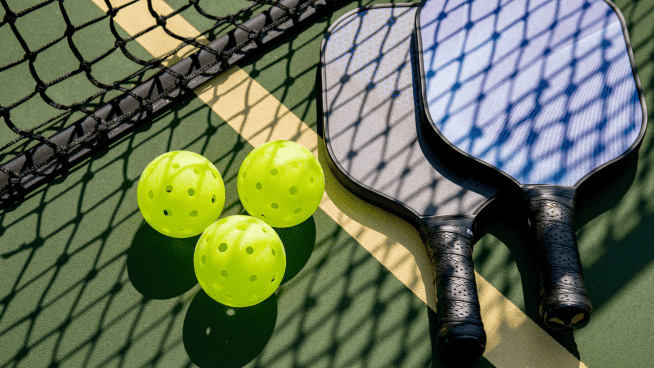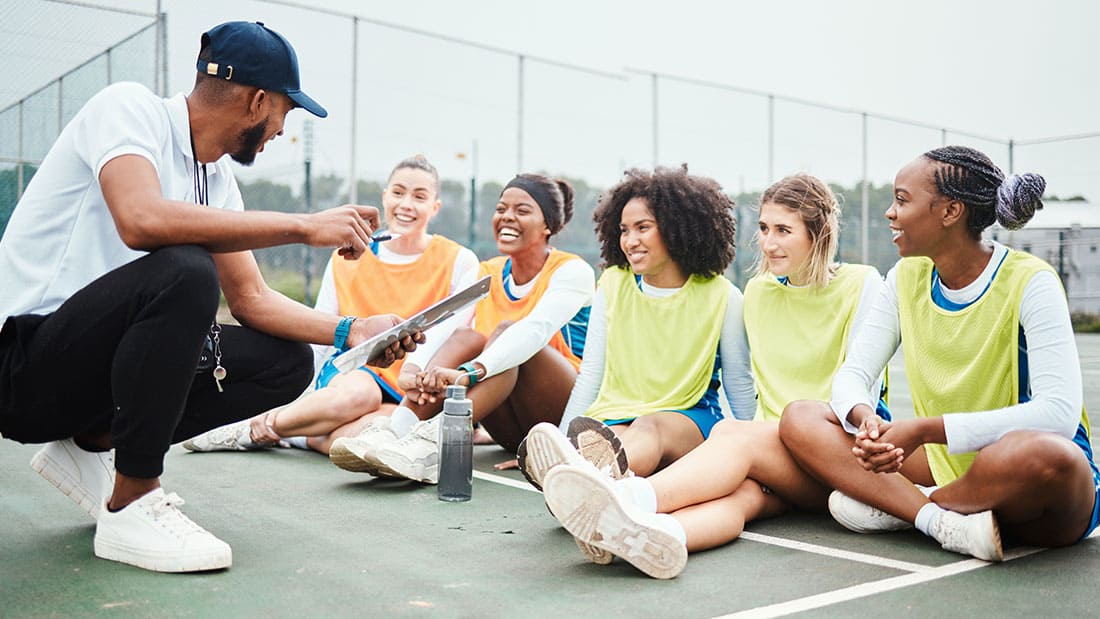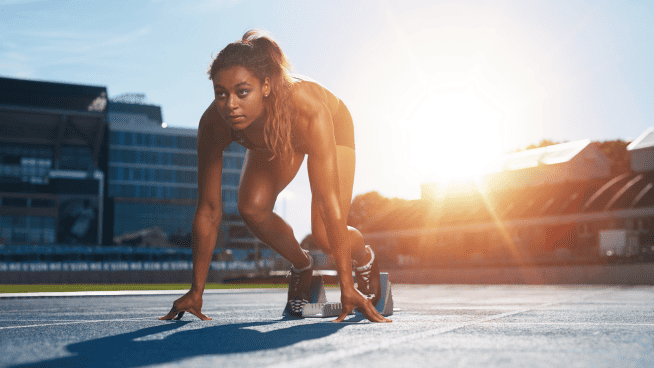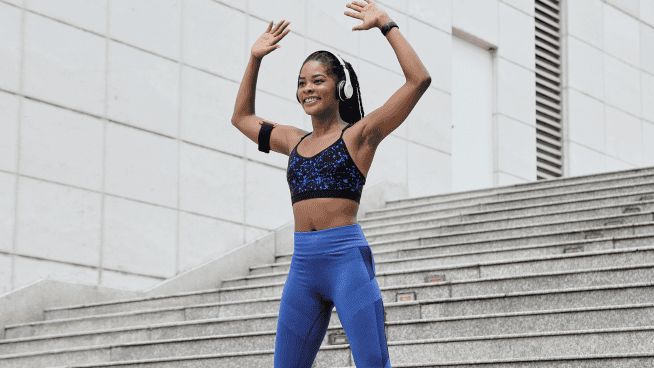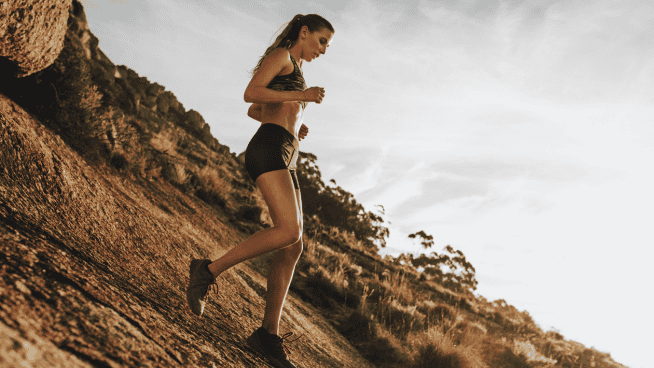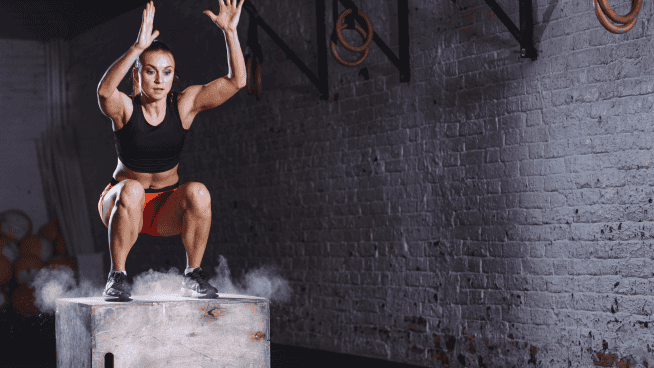The Best At-Home Exercises for Youth Athletes
It’s a question young athletes or their parents ask me at least three or four times per week: What are the best at-home exercises to improve sports performance? Sometimes they also run their current regimen by me to make sure they’re doing the right things: nightly Sit-Ups and Push-Ups, or lots of bodybuilding-inspired exercises such as Bench Presses and Bicep Curls.
While I certainly applaud the effort and dedication, I’m always a bit leery about the long-term effects of such an unbalanced training approach.
Let’s take the Sit-Ups and Push-Ups first. They’ve been around for years, so how bad could they be, right? The problem is that times have changed. Although parents and coaches may have trained this way “back in the day,” the same approach can pose major problems for their kids. Spending so much time in front of TVs, computers and video games has done a number on kids’ posture. Take a look around the next time you’re in the presence of a bunch of middle or high school students. You’ll invariably see a lot of them standing (and/or sitting) with a pronounced forward lean of the head and rounded shoulders.
Often, the sports they play are also heavy on movements that emphasize muscles on the front of the torso and hips: swimming, soccer, lacrosse, hockey, baseball. It makes little sense to target muscle groups like the pecs, hip flexors and abdominals—which are likely already at least somewhat shortened due to chronic overuse and lack of regular flexibility work (more on this in a minute). It also swings the injury-prevention pendulum way out of balance.
Think about it for a second. If you’ve got muscles that have become short and tight due to poor postural habits and chronic overuse, why would you want to engage in nightly exercises that only further that imbalance? If anything, one of your primary goals with any at-home training program should be to correct the situation.
And I’m not calling into question just bodyweight exercises. Many young athletes who strength train at home tend to focus on their “mirror muscles” with exercises like Bench Presses, Dips and Bicep Curls. I am not in any way bashing the idea of young athletes training to increase strength and size. I’m just questioning some of their exercise choices.
Bench Presses and Dips, like Sit-Ups and Push-Ups, target muscles that primarily act on the front of the torso. Other popular exercises like Bicep Curls and Tricep Extensions do little to increase systemic strength or any other appreciable aspect of athleticism.
That said, here are some alternatives to point kids in the right direction.
Stretch the muscles you use most often
Many young athletes tend to be tight all over, but some key areas need more attention from a flexibility standpoint. Regularly stretching the pecs, lats, abdominals, hip flexors, hamstrings and calves is a good starting point for most kids. Just remember to keep flexibility efforts specific to the task at hand, meaning that dynamic stretching (mobility drills) should precede all types of physical activity, while static stretching (where you hold a muscle group in the stretched position for at least 20-30 seconds at a time) is best done either immediately following physical activity or at other times throughout the day.
Focus strengthening efforts on the muscles you don’t overwork daily
The rule of thumb here is, if you can’t see it, train it! By turning your attention to the muscles on the back side of your body, you’ll not only take a major step toward reducing injury risk, but you’re also bound to see some noticeable improvements in physical performance.
Strengthening the upper back and rotator cuff, as well as the entire posterior chain (glutes, hamstrings and spinal erectors) will protect your shoulders and knees, while also building a solid foundation for the development of explosive strength and power. Some great exercises here include TRX or Resistance Band Rows, Stability Ball Leg Curls and Dumbbell Romanian Deadlifts. Even if you don’t have any workout equipment at home, simply swapping out Push-Ups and Sit-Ups for drills like Glute Bridges and Wall Slides can restore some much-needed balance to your body.
Get out of the “more is better” mindset
As admirable as it is that you want to work so hard to become better athletes, there’s also something to be said for working smart. Not allowing your body ample recovery time or pushing through physical pain will leave you burnt out or injured. Rather than trying to test the limits of what your body can withstand, take some time to listen to what it has to say. You might be surprised by how much better you’ll feel.
Give yourself the tools you need to succeed
One surefire way to know you’re doing things correctly is to use the right equipment. There’s no excuse not to do this stuff if everything is right at your fingertips. That’s why I recommend that all of my athletes get a foam roller (for soft tissue work), a stretch-out strap (to make it easier to adopt certain positions during stretching exercises), a stability ball, and either some resistance tubing or some light dumbbells as a way to load certain movements.
RECOMMENDED FOR YOU
The Best At-Home Exercises for Youth Athletes
It’s a question young athletes or their parents ask me at least three or four times per week: What are the best at-home exercises to improve sports performance? Sometimes they also run their current regimen by me to make sure they’re doing the right things: nightly Sit-Ups and Push-Ups, or lots of bodybuilding-inspired exercises such as Bench Presses and Bicep Curls.
While I certainly applaud the effort and dedication, I’m always a bit leery about the long-term effects of such an unbalanced training approach.
Let’s take the Sit-Ups and Push-Ups first. They’ve been around for years, so how bad could they be, right? The problem is that times have changed. Although parents and coaches may have trained this way “back in the day,” the same approach can pose major problems for their kids. Spending so much time in front of TVs, computers and video games has done a number on kids’ posture. Take a look around the next time you’re in the presence of a bunch of middle or high school students. You’ll invariably see a lot of them standing (and/or sitting) with a pronounced forward lean of the head and rounded shoulders.
Often, the sports they play are also heavy on movements that emphasize muscles on the front of the torso and hips: swimming, soccer, lacrosse, hockey, baseball. It makes little sense to target muscle groups like the pecs, hip flexors and abdominals—which are likely already at least somewhat shortened due to chronic overuse and lack of regular flexibility work (more on this in a minute). It also swings the injury-prevention pendulum way out of balance.
Think about it for a second. If you’ve got muscles that have become short and tight due to poor postural habits and chronic overuse, why would you want to engage in nightly exercises that only further that imbalance? If anything, one of your primary goals with any at-home training program should be to correct the situation.
And I’m not calling into question just bodyweight exercises. Many young athletes who strength train at home tend to focus on their “mirror muscles” with exercises like Bench Presses, Dips and Bicep Curls. I am not in any way bashing the idea of young athletes training to increase strength and size. I’m just questioning some of their exercise choices.
Bench Presses and Dips, like Sit-Ups and Push-Ups, target muscles that primarily act on the front of the torso. Other popular exercises like Bicep Curls and Tricep Extensions do little to increase systemic strength or any other appreciable aspect of athleticism.
That said, here are some alternatives to point kids in the right direction.
Stretch the muscles you use most often
Many young athletes tend to be tight all over, but some key areas need more attention from a flexibility standpoint. Regularly stretching the pecs, lats, abdominals, hip flexors, hamstrings and calves is a good starting point for most kids. Just remember to keep flexibility efforts specific to the task at hand, meaning that dynamic stretching (mobility drills) should precede all types of physical activity, while static stretching (where you hold a muscle group in the stretched position for at least 20-30 seconds at a time) is best done either immediately following physical activity or at other times throughout the day.
Focus strengthening efforts on the muscles you don’t overwork daily
The rule of thumb here is, if you can’t see it, train it! By turning your attention to the muscles on the back side of your body, you’ll not only take a major step toward reducing injury risk, but you’re also bound to see some noticeable improvements in physical performance.
Strengthening the upper back and rotator cuff, as well as the entire posterior chain (glutes, hamstrings and spinal erectors) will protect your shoulders and knees, while also building a solid foundation for the development of explosive strength and power. Some great exercises here include TRX or Resistance Band Rows, Stability Ball Leg Curls and Dumbbell Romanian Deadlifts. Even if you don’t have any workout equipment at home, simply swapping out Push-Ups and Sit-Ups for drills like Glute Bridges and Wall Slides can restore some much-needed balance to your body.
Get out of the “more is better” mindset
As admirable as it is that you want to work so hard to become better athletes, there’s also something to be said for working smart. Not allowing your body ample recovery time or pushing through physical pain will leave you burnt out or injured. Rather than trying to test the limits of what your body can withstand, take some time to listen to what it has to say. You might be surprised by how much better you’ll feel.
Give yourself the tools you need to succeed
One surefire way to know you’re doing things correctly is to use the right equipment. There’s no excuse not to do this stuff if everything is right at your fingertips. That’s why I recommend that all of my athletes get a foam roller (for soft tissue work), a stretch-out strap (to make it easier to adopt certain positions during stretching exercises), a stability ball, and either some resistance tubing or some light dumbbells as a way to load certain movements.





